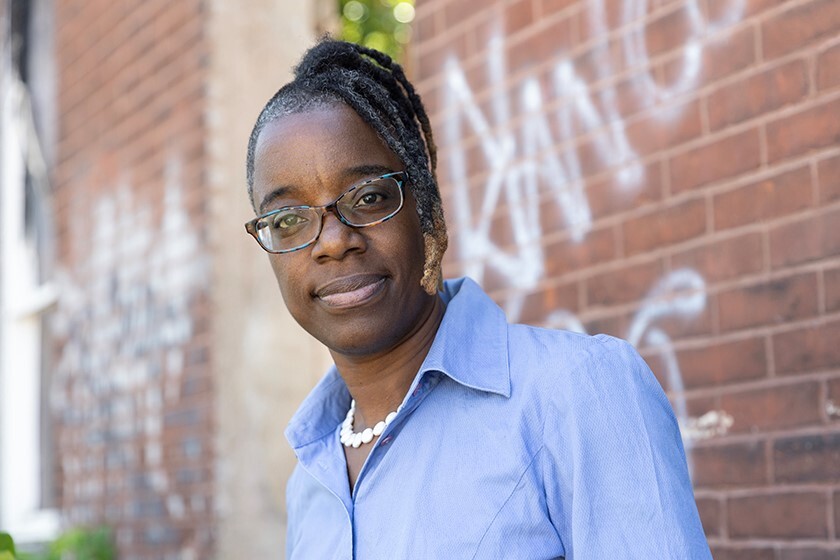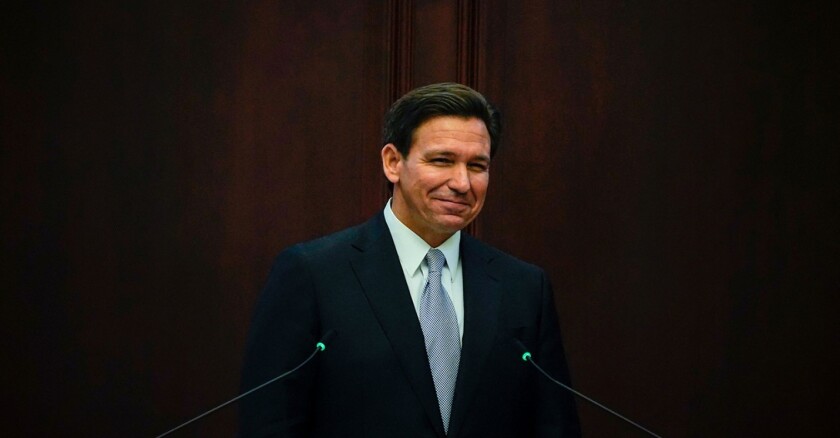Blue States Will Matter in GOP Presidential Primary: California hasn’t supported a Republican candidate for president since 1988. Donald Trump lost California by 30 percentage points in 2020. Gavin Newsom, the state’s Democratic governor, has made a point of feuding with Florida GOP Gov. Ron DeSantis, going so far as to run attack ads in Florida last year. DeSantis shot back in a speech delivered in Southern California on Sunday. “We’ve witnessed a great American exodus from states governed by leftist politicians, imposing leftist ideology and delivering poor results,” DeSantis said.
Despite all this, California is central to DeSantis’ chances for winning the GOP presidential nomination next year. The reason is simple. California votes on March 5, 2024, fairly early in the primary calendar. As the nation’s largest state, it’s also a huge trove of potential delegates and has played a key role in past Republican contests.
Blue states have played key roles in all the recent GOP primaries. In 2008, John McCain endured mixed results in the early primaries, before a late endorsement from Arnold Schwarzenegger helped him wrap up the California vote and nearly all of its 173 delegates. In 2012, Rick Santorum and Newt Gingrich split states in the South and Midwest with Mitt Romney, but Romney rode to the nomination through support from blue states including Michigan, Illinois and Massachusetts. Trump was more dominant in early primary states in 2016, but his victories in New York and all five Northeastern states in the “Acela primary” helped seal the deal.
This is potentially good news for DeSantis. Although Trump’s national polling numbers have improved a bit lately, a recent poll shows DeSantis cruising in California, beating Trump by 17 points in a head-to-head matchup and also prevailing in a more crowded field. Another poll found DeSantis with a smaller lead in Michigan, while also holding a statistically insignificant lead over Trump in New York. Other big states that generally don’t support Republicans in the fall are also rich sources of delegates.
There’s a likely explanation for DeSantis’ strength in blue states. Trump has dominated the vote from Republicans who lack college degrees, all the way back to 2016. Voters with higher levels of educational attainment have been more skeptical about him, and remain so. That matters during primary season because blue-state electorates tend to be more educated. The top 10 states in the nation, in terms of percentages of the population with four-year degrees, all supported President Biden in 2020. Nine of the 10 lowest states by this measure voted for Trump (with Nevada being the lone exception).
It's way too early to assume that DeSantis will enjoy an advantage among educated voters. Their support could fragment, as happened in 2016. And, within blue states, the smaller share of remaining Republicans tend to be pretty conservative, as demonstrated by the Trumpian candidates nominated for Senate or governor last year in states such as Massachusetts and New Hampshire. “I don’t know whether Republicans in blue states like Illinois, Washington, Oregon or Massachusetts will wind up being more liberal than Republicans in Idaho or Wyoming,” says Casey Dominguez, a political scientist at the University of San Diego.
Although it’s hard to imagine California voting Republican again anytime soon, it actually provided Trump with the most raw votes of any state in his contest against Biden. It’s the only state where Trump took more than 6 million votes in 2020.

“Ranked-choice voting has been the fastest-growing party-neutral voting reform in the nation for a reason,” says Ashley Houghton, FairVote’s senior policy director. “It gives voters better choices, rewards candidates who run bridge-building campaigns and unites parties behind strong electable candidates when used in primaries.”
Under RCV, candidates have to win majority support. Voters rank their choices, so if the first round of voting doesn’t produce a majority winner, second and third choice votes (and so on) are distributed as candidates with the least support drop out.
There was a point last year where it seemed some Republicans might warm to the method. The party was seeing controversial nominees with strong but limited cores of support winning primaries by pluralities.
But then Alaska happened. Between them, the two leading Republican candidates took nearly 60 percent in the first round of voting, compared with Democrat Mary Peltola's 40 percent, but the GOP vote was split. Former Gov. Sarah Palin had a ceiling of support and Peltola became the first Democratic House member from Alaska in half a century. Last weekend, Palin traveled to the Conservative Political Action Conference to speak against ranked-choice voting. “It’s bizarre, it’s convoluted, it’s confusing and it results in voter suppression,” Palin complained last year.
An analysis of RCV in Alaska from the conservative R Street Institute found that elections became “more civil and competitive” and caused little disruption for voters or elected officials. Nevertheless, Palin is not alone in being unhappy about the change. A number of Republicans complain that vote-counting under RCV is slow, the process confuses voters, and it undermines both outcomes and the traditional party system. Ken Cuccinelli, a former Virginia attorney general and now head of the Election Transparency Initiative, claims RCV is “designed to rig elections in favor of liberal incumbents and defeat conservative challengers.”
In January, the Republican National Committee approved a resolution stating that RCV increases distrust in elections and suppresses votes.
Such criticism is translating into action. Bills to block RCV have been introduced in red states including Idaho and North Dakota. Last week, the Montana House approved a ban, while the South Dakota House sent an anti-RCV bill to Gov. Kristi Noem’s desk.
RCV may continue to be adopted in more places, but it’s clear its acceptance will not be universal.

That will reduce the Democrats’ majority to 101-100. With a vacancy to be filled in a GOP-leaning district in May, Democrats will want to get Zabel’s replacement seated in time to avoid slipping into a partisan tie…
Seats on the St. Louis Board of Aldermen are particularly competitive this year, as the board shrinks from 28 members to 14. Three incumbents were ousted on Tuesday while two others running against each other in the same ward ended up tied, pending military and provisional ballots…
Among the other election results Tuesday, Oklahoma voters rejected an initiative that would have made marijuana legal for recreational use…
In 2021, the Mississippi Supreme Court struck down the state’s initiative process. Voters want it back. A poll conducted in January, sponsored by left-leaning groups, found that 65 percent want to have an initiative process, with only 14 percent opposed.
Last week, a Mississippi House committee advanced a measure that would restore initiatives. It would require initiative backers to collect more than twice as many signatures as under the old system, however. The committee also amended the bill to specify that initiatives related to abortion would be specifically disallowed, with legislators reserving the right to address that matter for themselves. It was a Mississippi case that led to the U.S. Supreme Court’s decision to overturn federal abortion rights last year.
Correction: An earlier version of this article incorrectly stated Sarah Palin won a clear plurality in a special election held last August to fill the state’s U.S. House seat. We regret the error.
Previous Editions
-
The real problem is that being a big-city mayor during the pandemic was a no-win proposition. Meanwhile, the race for a Wisconsin Supreme Court seat has already cost more than $10 million and special elections are likely to be nastier and more expensive than before.
-
South Carolina will hold the first primary election but it isn't yet clear when the first five states' primaries will take place. Meanwhile, no one wants to run Seattle and redistricting never ends.
-
She barely won re-election then her pick for the state's top judge was rejected by the New York Senate Judiciary Committee. Also, don't throw rocks and can states and locals get along?
-
So far, nine Democrats have officially declared their intention to run for the mayorship. Meanwhile true bipartisan leadership exists at the state level, Ohio's attorney general does double dipping and more.













